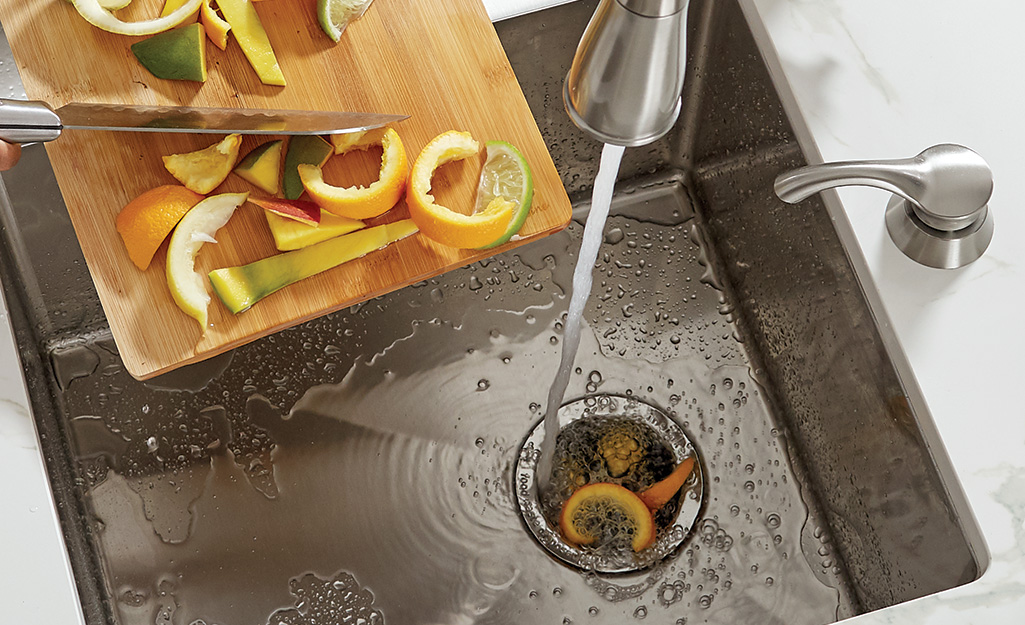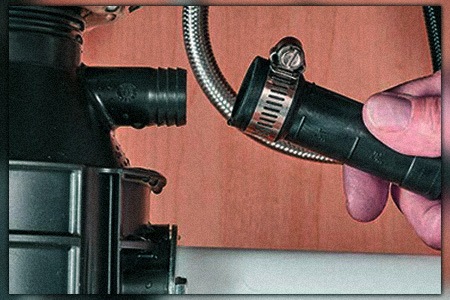What're your ideas regarding Why Is ?

Garbage disposals are important kitchen appliances that help in disposing of food waste successfully. However, a leaking waste disposal unit can be an irritating and messy problem to handle. Luckily, lots of leakages can be fixed easily with a few simple steps. In this article, we will certainly review just how to deal with a dripping waste disposal unit properly.
Intro
Garbage disposals are installed under kitchen sinks and are made to shred food waste into smaller sized items, allowing it to pass through the plumbing system quickly. While these devices are normally reliable, leaks can happen over time because of wear and tear, loose connections, or damage to the unit.
Typical Root Causes Of Leakages in Rubbish Disposals
Worn Seals and Gaskets
Seals and gaskets play a crucial role in stopping water from dripping out of the garbage disposal. In time, these components can deteriorate, leading to leakages around the disposal system.
Loose Connections
The links between the waste disposal unit and the pipes system can become loosened gradually, causing water to leakage out during procedure.
Fractures or Holes in the Disposal Unit
Physical damages to the garbage disposal, such as splits or holes in the real estate, can also cause leaks.
Determining the Resource of the Leakage
Before trying to fix a dripping waste disposal unit, it is important to recognize the source of the leak. This can commonly be done through visual assessment or by performing simple tests.
Visual Assessment
Evaluate the waste disposal unit device carefully for any type of indicators of water leak. Pay close attention to locations around seals, gaskets, and connection factors.
Evaluating for Leakages
One way to check for leakages is by running water through the disposal system and checking for any noticeable indications of leak.
Devices and Products Needed for Fixing a Leaking Waste Disposal Unit
Prior to starting the repair service process, gather the essential tools and products, including a screwdriver, adjustable wrench, plumber's putty, replacement seals or gaskets, and epoxy or patching product for repairing splits or holes.
Step-by-Step Overview to Taking Care Of a Dripping Garbage Disposal
Shut off the Power
Prior to attempting any kind of repair work, make certain that the power to the garbage disposal system is switched off to prevent the threat of electric shock.
Find the Leakage
Recognize the exact place of the leakage and establish the cause.
Tighten Connections
Make use of a wrench to tighten up any loose connections between the disposal unit and the plumbing system.
Replace Seals or Gaskets
If the leak is because of worn seals or gaskets, get rid of the old parts and change them with brand-new ones.
Patching Fractures or Openings
For fractures or holes in the disposal unit, use epoxy or a suitable patching material to seal the broken area.
Examining the Garbage Disposal After Repair Service
Once the repair work is full, test the waste disposal unit by running water through it to make sure that the leakage has actually been settled.
Preventive Upkeep Tips to Stay Clear Of Future Leakages
To prevent future leakages, it is necessary to perform regular upkeep on your garbage disposal. This consists of keeping it tidy, preventing placing non-food products or difficult things down the disposal, and periodically checking for leaks or other issues.
Final thought
To conclude, dealing with a leaking garbage disposal is a relatively uncomplicated procedure that can be completed with basic devices and products. By complying with the steps detailed in this short article and exercising preventative upkeep, you can keep your waste disposal unit in good working problem and prevent costly fixings in the future.
What to Do About a Leaking Garbage Disposal
A leaking garbage disposal often goes unnoticed until you confront a sopping cabinet, a foul-smelling puddle, or an audible drip-drip-drip from the unit. The fix can be frustrating, too, because the leak can stem from a number of components in the system. Fortunately, with a little sleuthing, you can zero in on the leak and—depending on the exact location—stop the icky oozing and repair the component that caused it. Worst case scenario, if it turns out that the garbage disposal must be replaced, installing a new one is a reasonable do-it-yourself task for those with basic plumbing skills. Read on to keep the cash you’d otherwise hand over to a pro.
Prepare to find the leak
Prior to testing the garbage disposal for leaks, unplug it at the wall outlet and turn off the power from the breaker box to prevent electrical shock. Then insert a watertight sink stopper into your sink drain and wipe the unit dry with a clean cloth. In any handy container, mix a few drops of food coloring into a few cups of water, and pour the dyed water onto the sink stopper to help you locate the leak.
Investigate the source
the top, where the disposal meets the sink drain the side, where the dishwasher hose or main drain pipe connects to the disposal or the bottom of the unit Inspect each of these locations while gliding a light-colored rag over the unit; the dyed water will readily show on the rag and reveal the location of the leak. If a leak isn’t immediately apparent, remove the sink stopper and pour a few more cups of dyed water down the sink drain, then check for leaks again. Leaks near the top of the unit are more likely to show themselves while the sink is plugged, while side and bottom leaks are more noticeable while the sink is unplugged.
The metal sink flange that sits directly inside the sink drain is typically sealed around the top with plumber’s putty (a clay-like sealant) and then secured from under the sink with bolts. If the plumber’s putty deteriorates, or the bolts loosen, the flange can no longer form a watertight seal between the sink drain and the disposal—which could cause a leak at the top of the unit.
To reseal the leaky flange, you must first detach the garbage disposal. Start by loosening the screws securing the main drain pipe to the disposal, then loosen the screws in the metal clamp securing the dishwasher hose to the disposal and detach the drain pipe and dishwasher hose from the disposal. Loosen the screws in the mounting ring that connects the disposal to the metal mounting assembly beneath the sink, then pull down the disposal and carefully set it on a clean, dry surface. Loosen the bolts in the mounting assembly with a wrench, then pull down the mounting assembly and set it near the disposal.

I hope you enjoyed reading our topic on How to fix a pretty consistent leak from my garbage disposal. Thank you for spending some time to read through our article. Enjoyed reading our article? Please share it. Let other people check it out. Thanks for your time. Visit again soon.
Source